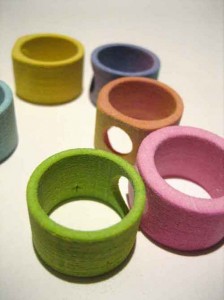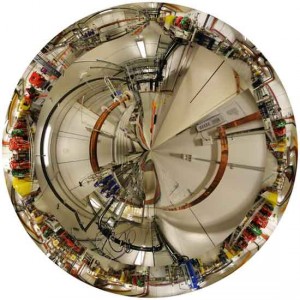Building on the success of the Synapse Residency model, ANAT entered a partnership with Arts Victoria to deliver opportunities for artists to collaborate with scientists in Victorian science and research institutions. The following art/science partnerships were selected to participate in the three-month residencies:
Frances d’Ath + the Centre for Astrophysics & Supercomputing, Swinburne University
Leah Heiss + Nanotechnology Victoria
Chris Henschke + the Australian Synchrotron
Here is a snippet to whet your appetite…
Leah Heiss
There are timeframes and then there are timeframes.
I am realising that in the world of therapeutic technologies – in fact anything related to medicine – timeframes are much longer than in the world of art & design making. For instance, a drug trial might take 5-10 years, an aeon in relation to a concept design or even completed design prototype. As I am working with developing human scale prototypes to contain therapeutic technologies, I have to reconcile such diverse timeframes.
I am keen to develop two physical prototypes during the residency to house these technologies. The first, a vessel that contains mesoporous iron oxide for treating arsenic in ground water, is a technology that has already been developed. However, I would like to incorporate a sensing device into the vessel – something that does not currently exist. So here the project becomes speculative & contingent on future development.
The second project is an extension of my early Patch Rings project, only operating on a longer timeframe. Again, the role of the artist working with emerging therapeutic technologies is positioned as speculative… that is, developing solutions to problems that are still being fleshed out. The thing about this is that, as artists/designers, we have an impact on that which is not yet completely formed, leading to the possibility that our ideas will shape consumer expectations. Further, by the time therapeutic technologies are tested and ready to enter the marketplace, our designs will be so well resolved that they will be able to be released alongside their technological counterparts.
Chris Henschke
Standing in the middle of a 3 Giga-electron volt particle accelerator and asking ‘what is art?’ is a strange place to find myself!
The Australian Synchrotron is a facility of immense theoretical and technical complexity, where scientists and engineers from a wide range of specialized areas to work together in pursuit of common goals. It would be impossible for any one individual to fully understand all the workings and details of such an enterprise; indeed, to understand the current states and uses of synchrotrons would require years of study in disciplines ranging from pure and applied mathematics to particle and optical physics, inorganic chemistry to cellular biology, computer science, mechanical and electrical engineering, and so on. Even to ‘imagine’ how some of the more abstract aspects the synchrotron works requires very creative visualization skills by the scientists involved.
With the advent of digital technologies, many of the processes in scientific research are now synonymous with those of contemporary media art – in particular the methods used for visualising data. So perhaps data from the synchrotron can be aesthetically analyzed, to produce artworks that use the output from the synchrotron in their composition. Conversely, using scientific analysis ‘tools’ such as fourier analysis for the production of art ‘embeds’ the processes of science within the artworks – and, although the results are very different, the shared elements and methods point to a fundamental form of visualization common to both disciplines.
Historically, ideas of trans-disciplinary visualization have been explored by both artists and scientists. One figure in 20th century physics stands out in this area, the father of the atom, Niels Bohr. During his quest to unify the theories of quantum mechanics in the 1920s, Bohr came to appreciate the primacy of visual thought in both science and art, and was inspired by art movements such as cubism [1] and surrealism [2], which arguably aided the development of his theory of complementarity (that is, a subatomic entity – and a work of art! – can appear to be a different thing depending on how you look at it).
For me, these issues raise further questions about the relationships between art and science and the epistemology of both disciplines. This is something I will be wrestling with for the remainder of the residency, whilst I try to visually ‘imagine’ what’s happening down in the synchrotron ring as they send particles flying around it at 13.3 million revolutions per second…
References
[1] Cubism was a 20th century art movement that revolutionized European painting and sculpture, and inspired related movements in music and literature. http://en.wikipedia.org
[2] Surrealism, a cultural movement that began in the mid-1920s, is best known for the visual artworks and writings of the group members. The works feature the element of surprise, unexpected juxtapositions and non sequitur. http://en.wikipedia.org
Read More
http://heiss.anat.org.au/
http://henschke.anat.org.au/








